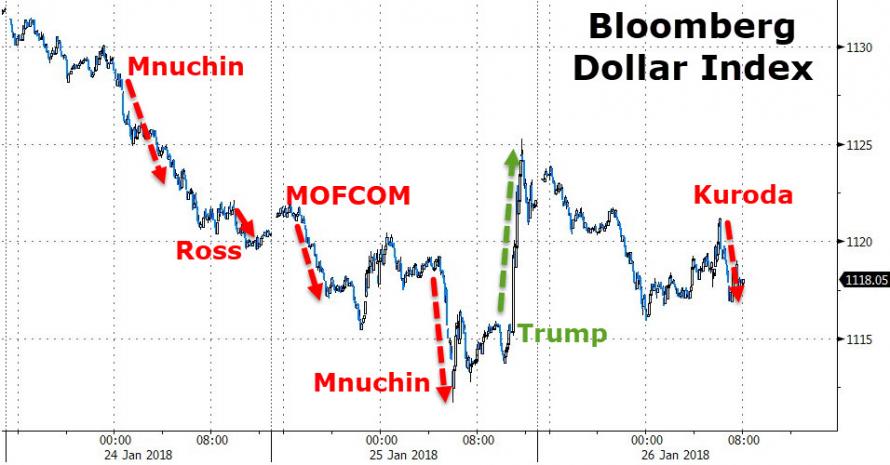The Dollar is tumbling once again today, erasing President Trump’s rescue bid yesterday, and pushing FX volatility up to its highest in 4 months.

Here’s why…
Trying to make sense of the Mnuchin-Trump confusion, DB’s FX Strategist Alan Ruskin believes that what you have here is two officials who like a weak(er) USD in the short-term that will help the US trade accounts and support growth, albeit to the point where strong growth will eventually support a strong USD longer-term.
In Alan’s view this is a way of saying that in the short-term a weak USD is good for US trade, and in the long-term a strong USD is good because it is indicative of strong growth a healthy economy.
Alan highlights that this is clearly a very confusing message to convey and it’s unlikely to either be reported or understood correctly, which doesn’t really help the message.
Notably, as we saw yesterday (with stocks slammed as Trump jawboned the dollar higher), BofA is also warning that a reversal of the dollar’s recent weakness could also spark a sharp correction in stocks.

As a reminder, a U.S.-Europe FX spat was a trigger of the 1987 stock market crash… and the dollar’s YTD weakness is the worst since 1987.
January 24th, 2018: Steven Mnuchin to Davos: “A weaker dollar is good for us as it relates to trade and opportunities.” October 17th, 1987: James Baker to the Germans: “Either inflate your mark, or we’ll devalue the dollar.”
— David Rosenberg (@EconguyRosie) January 24, 2018
Interestingly, stocks soared (just as they are now) as the dollar crashed (just as it is now) in 1987… before things went pear-shaped…

In other words – “Higher dollar = pain trade = risk-off coming.”
Rising bond yields. Full employment. Fed tightening. Trade frictions. Weak dollar. Rising twin deficits, spurred by tax reform. Sound familiar? It should. This was 1987. Start rebalancing.
— David Rosenberg (@EconguyRosie) January 26, 2018











Leave A Comment